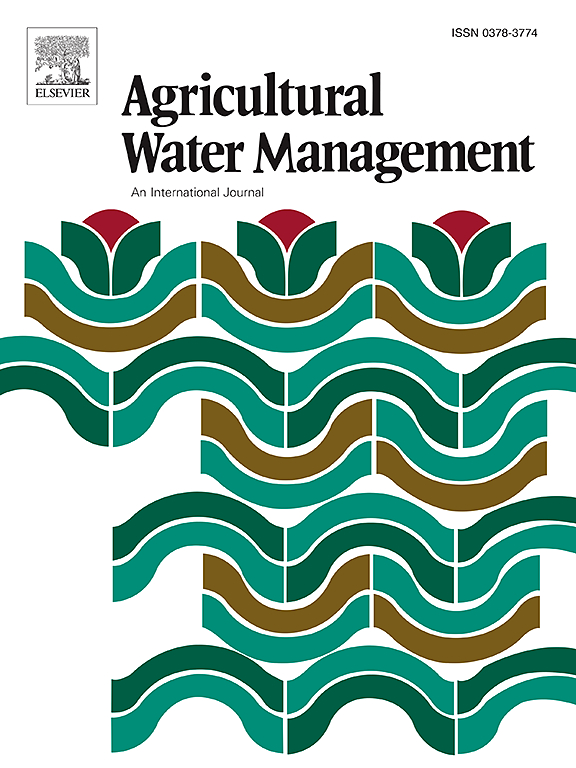A modified model for simulating subsurface drainage with synthetic envelope considering impacts of entrance resistance and its application
IF 5.9
1区 农林科学
Q1 AGRONOMY
引用次数: 0
Abstract
Subsurface drainage is an important means to prevent and control salinization and waterlogging. Accurate simulation of water and salt discharge is crucial for determining the design parameters of subsurface pipes. Existing models for simulating subsurface drainage discharge neglect the additional entrance resistances of drains induced by the low permeability of synthetic envelopes, which will overestimate the drainage discharge. This study aimed to develop a numerical model considering the entrance resistance of various envelopes and provided guidance for subsurface drainage design. The proposed modified model is based on the previous developed subsurface drainage package (SDR), in which a correction coefficient (Csdr) reflecting entrance resistance was proposed and used to calculate the drainage discharge. The modified SDR package was verified by a synthetic case and series of practical examples with different entrance resistances caused by envelope materials. The model was then utilized to figure out the impact of pipe depths, spacings and entrance resistances on the water balance items. The influence on the mean and variance of drainage water is quantified by two indicators, AMAE and AMAV, which measure the expected changes in the mean and variance of the output due to parameter variations. Appropriate pipe depth and spacing under different entrance resistances was investigated. The results demonstrated the accuracy of the modified model in simulating the groundwater depth and drainage flux under different entrance resistances. For the scenarios where subsurface pipes were covered with synthetic envelopes, the errors of original SDR were out of range, while for the modified SDR, the normalized root mean square errors (NRMSEs) are less than 3.18 % and Nash-Sutcliffe efficiency coefficient (NSE) and Kling-Gupta Efficiency coefficient (KGE) greater than 0.9, respectively. Analysis of the water balance showed that an increase in subsurface drainage amount is beneficial to reduce the increase amount of the aquifer storage and the control of the groundwater depth. The drainage discharge amount was most sensitive to Csdr, with AMAE and AMAV being 0.49 and 0.52. The spacing and Csdr had an interactive effect on the drainage discharge amount, while the buried depth had no interactive effect with other factors. Narrower pipe spacing was recommended for subsurface drain design with relatively high entrance resistance (smaller Csdr value). For those subsurface pipes covered with non-woven fabric of which the Csdr is about 0.03, the pipe spacing should be around 10 m. This study provides a new method and insight for suitable design parameter of subsurface drains.
求助全文
约1分钟内获得全文
求助全文
来源期刊

Agricultural Water Management
农林科学-农艺学
CiteScore
12.10
自引率
14.90%
发文量
648
审稿时长
4.9 months
期刊介绍:
Agricultural Water Management publishes papers of international significance relating to the science, economics, and policy of agricultural water management. In all cases, manuscripts must address implications and provide insight regarding agricultural water management.
 求助内容:
求助内容: 应助结果提醒方式:
应助结果提醒方式:


